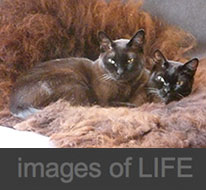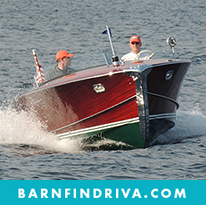I used to have a LAWN, now I have a NATURAL environment
I also have a sanctuary, a small enclosed garden, away from the “natural” environment I designed. My twitter friend @InterLeafer already has the “Sanctuary” title and a great post to go with it. This is all about a “Lawn Reform” movement, a new website and a great promotion via Blue Planet.
In recent years my Landscaping design has focused almost exclusively on low maintenance, drought resistant plantings and designs requiring no or minimal environmental pollutants to foster success. This is very different from where I grew up in the UK, and also to what I focused on years ago: when we masterminded extensive lawns framed by 120 foot serpentine perennial beds or multiple 100 foot Herbaceous borders, with dramatically evolving color palettes as the seasons changed ~ very labor and nutrient intensive. I am so glad my focus has changed ☺
When we go into a new area we start by understanding what the local environment really looks like ~ and what it looks like through the changing seasons.
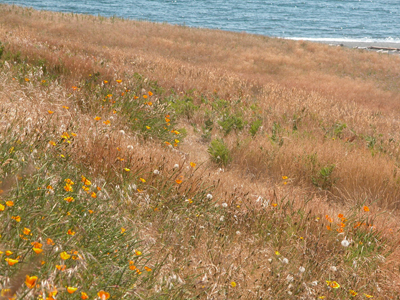
Wild grasses hold sway in the salt-tinged wind, green in the spring, gold in summer, sprinkled with California poppies. The San Juan Islands, located in the Pacific North West, boast a variety of “grassy” natural environments, perfect for us to imitate in our landscaping designs.
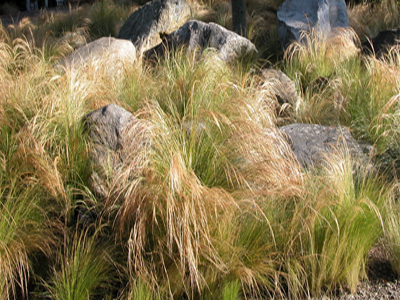
In the beginning, rocks discarded from a neighboring construction site were brought in, and arranged as though by Nature herself. Mexican Feather Grass was planted prior to the winter rains.
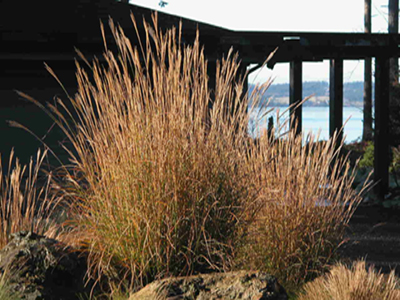
Several species of Miscanthus Sinensis were planted amidst the sea of feather grass and our rocky outcroppings.
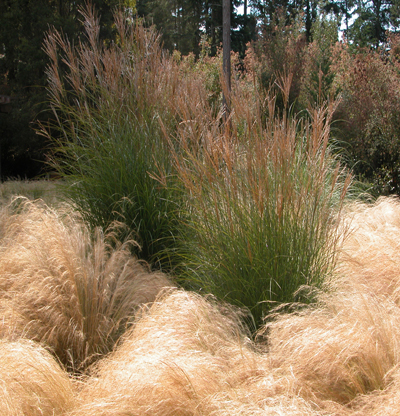
The feather grass turns fluffy and golden at summer’s end; the flowing motion created by gentle breezes or the more vigorous winds off the water adds considerable drama after the long hot lazy sunny summer days.
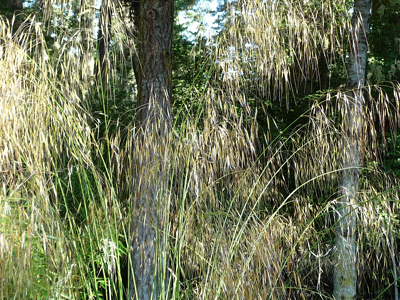
Gigantic feather grass, growing over eight feet, is like a gigantic lace curtain separating spaces within the “natural” environment we created.
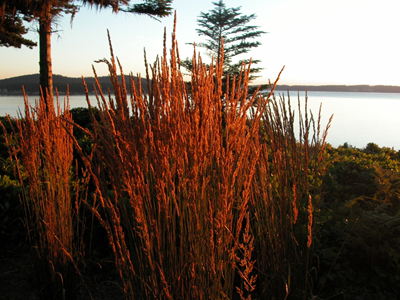
Reed feather grass, also called Karl Foester, resembles the grass we see all along the island road sides. It is one of our favorites, as it flourishes wherever planted, even on the bluffs taking on the salt and wind.
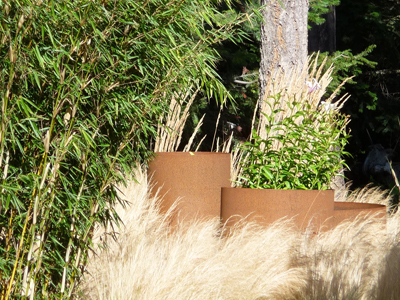
Custom designed steel planters, with their ‘patina of rust’, emerge from the feather grass as though from some former industrial artifact.
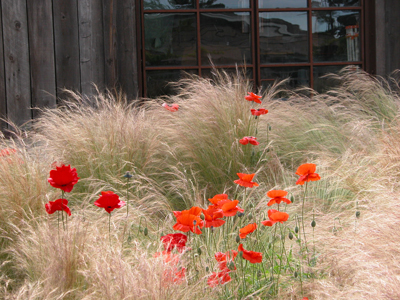
Patty, the owner of the island’s best resource Islandscape, suggested I plant the European poppy ~ Legion of Honor ~ propagated by seed, instead of the closer to home California poppy. “These red poppies are controllable if they get out of hand”, Patty said, “however the California poppies with extensive root systems are perennials and very difficult to eradicate or control when they take over, and they will”. I wanted to simulate the “natural” environment by bringing in the actual plants from the surrounding area, however, she advised against digging up the local roadside or beach grasses. Though perfectly beautiful and suited to my design, they could cause havoc in a controlled ecosystem, destroy my vision and create a maintenance nightmare. She helped me select just the perfect “look alike” to create the final effect I had in mind, and choices that would work in our locale.
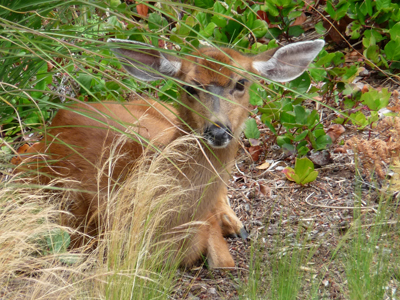
Where Mexican Feather Grass might be invasive if introduced into other areas, in the island climate (and I checked carefully) it is far more docile, really only reseeding its many scattered light green offspring within a few feet. It is really quite well mannered and does does not penetrate the outer edges, which are covered with a heavy layer of the indigenous island Salal. The grasses attract the wildlife and often deer are found resting or even having their young. “Natural” attracts Nature.
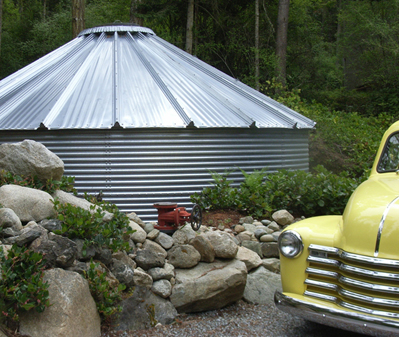
When you design in a new area, it’s important to check with local nurseries, designers, and if possible a meteorologist, to get an understanding of climate and rainfall. Annual rainfall is always a major consideration even when designing “natural” environments with drought tolerant planting. To counteract many summer months without rainfall, rain collection and storage systems are often a viable solution. Wherever possible and local conditions dictate, we recommend and design collection and storage systems for landscaping, often adding filtration for household use.
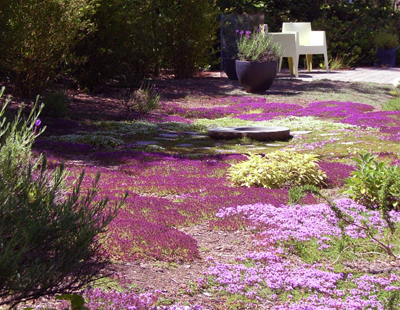
We have designed other “natural” environments including thyme lawns, simulating patches of wild flowers found in woodland glades, attracting layer upon layer of honey bees. These lawns are thirstier than the grasses, and in the island landscape require lots of additional water to keep the blooms from drying out; but on a small scale they are a dramatic contrast of color and well worth the effort and additional water.
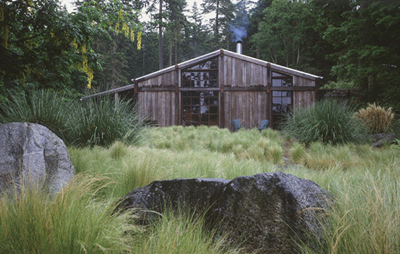
The different coloration and movement of the grass can create “water dragons”, which I have learned carry extremely benevolent energy, and houses which are built in natural environments have some of the very best feng-shui ☺
AND by the way the entire two acres of this “natural” environment project started out as LAWN.
Any comments, suggestions or continuing discussion; please comment below or email me at casudi@esse-group.com.
Caroline Di Diego
@CASUDI
www.inclinedesign.info
INCLINED TO DESIGN





